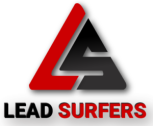Artificial Intelligence (AI) is rapidly becoming a critical tool in cybersecurity, particularly in predicting and preventing cyberattacks. As cyber threats evolve in complexity and frequency, traditional security systems often struggle to keep pace. AI, with its advanced algorithms and ability to process vast amounts of data in real-time, is uniquely suited to address these challenges, offering proactive defenses and insights that can protect organizations from emerging threats.
One of AI’s most significant contributions to cybersecurity is its ability to predict potential attacks before they happen. By analyzing patterns of behavior across networks, systems, and user activities, AI can detect anomalies that indicate the early stages of a cyberattack. Machine learning models can sift through huge volumes of data, learning what normal behavior looks like and flagging anything that deviates from it. This predictive capability allows cybersecurity teams to respond to threats faster, often before any damage is done.
AI is also adept at identifying zero-day vulnerabilities—flaws in software that hackers can exploit before developers become aware of them. These vulnerabilities are notoriously difficult to detect using traditional methods because they haven’t yet been documented. However, AI can scan code and network traffic, recognizing potential weaknesses and suspicious activity that could signal a zero-day attack. This helps organizations stay ahead of hackers who exploit these vulnerabilities.
In addition to predicting attacks, AI is proving invaluable in preventing them. One way AI accomplishes this is by automating the identification of malware. Traditional cybersecurity methods rely on signature-based detection, where known malware is identified by its unique signature or code. However, as hackers develop new variants of malware, these methods can become ineffective. AI, on the other hand, uses behavior-based detection, which analyzes how programs interact with systems. By focusing on the behavior rather than the signature, AI can detect even previously unknown malware, preventing it from spreading within a network.
AI-driven cybersecurity systems also use natural language processing (NLP) to gather intelligence from hacker forums, the dark web, and open-source platforms. By scanning for discussions about vulnerabilities, attack techniques, or newly discovered malware, AI systems can alert security teams to emerging threats. This proactive approach enables organizations to strengthen their defenses before an attack is launched.
Phishing, one of the most common methods used by cybercriminals to infiltrate systems, is another area where AI has made significant strides. AI-powered tools can analyze email content, detecting subtle clues that suggest phishing attempts, such as odd wording, unusual email addresses, or links to malicious sites. These tools can then filter out potentially harmful emails before they reach a user’s inbox, significantly reducing the likelihood of a successful phishing attack.
AI also plays a crucial role in responding to cyberattacks in real time. When a breach occurs, AI can quickly analyze the scope of the attack, identify compromised systems, and recommend or implement actions to contain the damage. In some cases, AI systems can autonomously isolate affected parts of a network to prevent the attack from spreading further. This rapid response is critical in minimizing the impact of cyberattacks, particularly ransomware, where time is of the essence.
Another emerging use of AI in cybersecurity is its role in enhancing authentication systems. AI can improve multi-factor authentication (MFA) by analyzing behavioral biometrics, such as typing patterns, mouse movements, or how a person holds their phone. These subtle behaviors are difficult for hackers to replicate, providing an additional layer of security. AI can also detect when an authenticated user’s behavior suddenly changes, suggesting that their credentials may have been compromised, and take action accordingly.
However, while AI offers significant advantages in cybersecurity, it also presents challenges. One concern is that cybercriminals are beginning to use AI to enhance their attacks. For example, AI can be used to develop more sophisticated malware that can adapt to evade detection or to conduct highly targeted phishing attacks by analyzing a victim’s online behavior. As both attackers and defenders adopt AI, the cybersecurity landscape is becoming a battleground of AI systems.
There are also ethical concerns about the use of AI in cybersecurity. The reliance on vast amounts of data to train AI models raises privacy issues, as it often requires access to sensitive user information. Additionally, the use of AI to monitor user behavior can lead to concerns about surveillance and the potential for misuse. As AI continues to evolve in cybersecurity, addressing these ethical challenges will be critical to maintaining public trust.
Despite these concerns, the benefits of AI in predicting and preventing cyberattacks are undeniable. Its ability to analyze data at scale, identify patterns, and respond to threats in real-time makes it an indispensable tool in modern cybersecurity strategies. As cyber threats continue to evolve, AI’s role in protecting systems, data, and networks will only grow in importance, offering a powerful defense against increasingly sophisticated attacks.
From Our Editorial Team
Our Editorial team comprises of over 15 highly motivated bunch of individuals, who work tirelessly to get the most sought after curated content for our subscribers.




